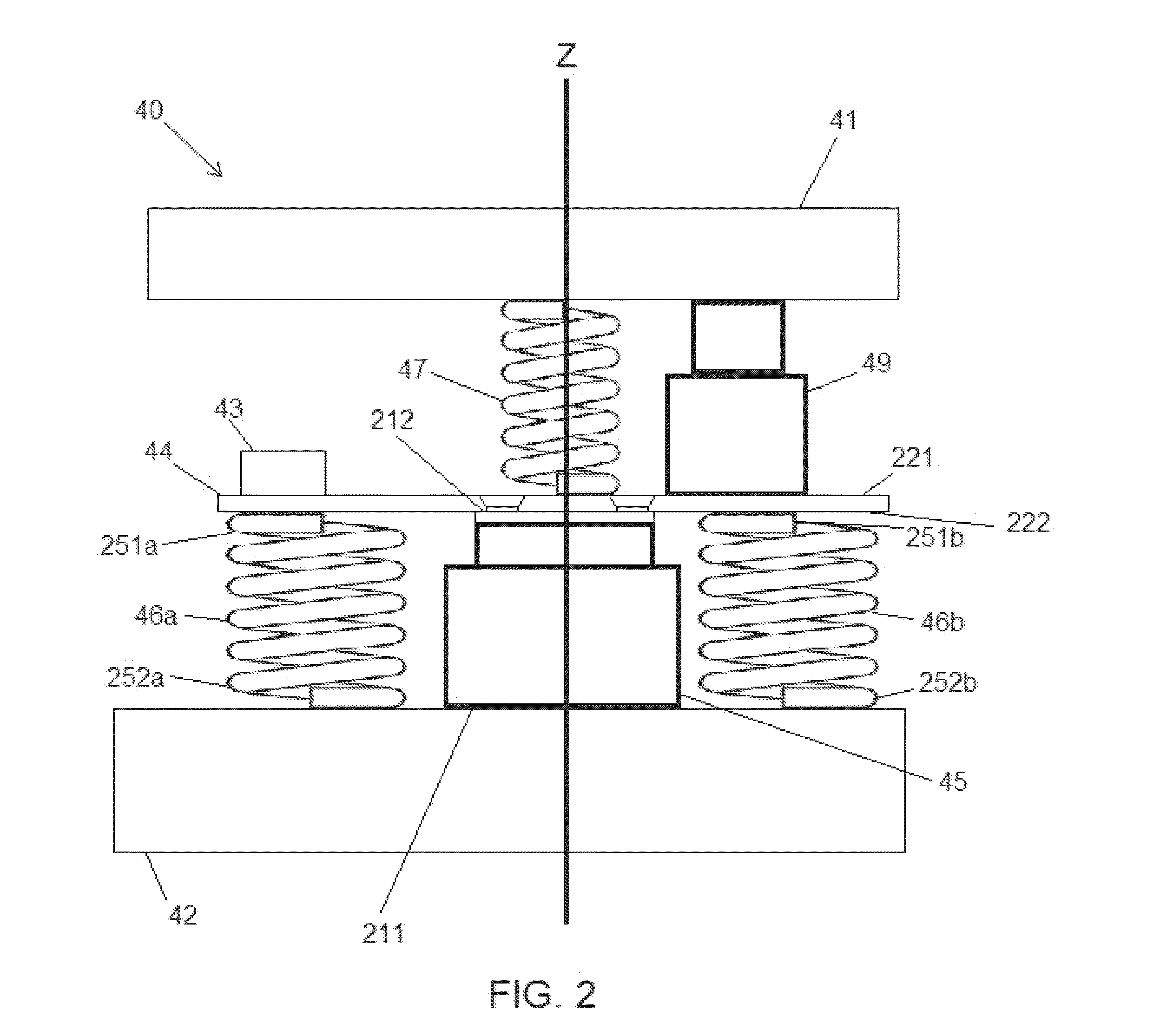Active vibration isolation system
a technology of active vibration and isolation system, which is applied in the direction of shock absorbers, program control, instruments, etc., can solve the problems of compromising efficiency, difficult to suppress vibration at low frequencies, and high cost of actuator types
- Summary
- Abstract
- Description
- Claims
- Application Information
AI Technical Summary
Benefits of technology
Problems solved by technology
Method used
Image
Examples
Embodiment Construction
[0018]FIG. 1 illustrates an active vibration isolation system 10 according to one embodiment of the present invention. Active damping system 10 is positioned between an isolated payload 12 (i.e., isolated payload platform or the payload supported thereon or the combination of the two) and a base 21 (e.g., a source of vibration, such as the floor or external casing) to suppress and isolate vibration and other dynamic forces from being transmitted to the payload 12. It should be appreciated that FIG. 1 illustrates a system which addresses active or dynamic vibration isolation in one of three axes. This simplification has been made for the ease of explanation. However, it should be understood that system 10 is capable of being utilized to permit active vibration isolation up to all six degrees of freedom.
[0019]As used throughout the specification and in the claims with reference to a support element, to support “at least substantially all of the static force” of the payload means that ...
PUM
 Login to View More
Login to View More Abstract
Description
Claims
Application Information
 Login to View More
Login to View More - R&D
- Intellectual Property
- Life Sciences
- Materials
- Tech Scout
- Unparalleled Data Quality
- Higher Quality Content
- 60% Fewer Hallucinations
Browse by: Latest US Patents, China's latest patents, Technical Efficacy Thesaurus, Application Domain, Technology Topic, Popular Technical Reports.
© 2025 PatSnap. All rights reserved.Legal|Privacy policy|Modern Slavery Act Transparency Statement|Sitemap|About US| Contact US: help@patsnap.com



